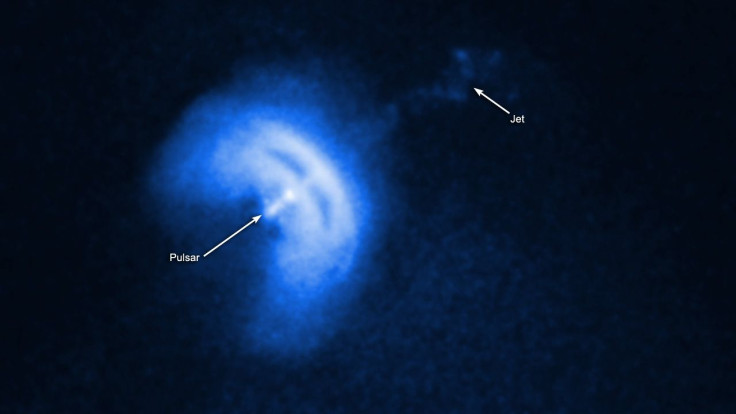Neutron Star’s ‘Glitch’ Captured With Radio Telescope For The First Time Ever

Following a supernova, the core of a massive star, if it’s below a certain mass, condenses and collapses under the impact of gravity to form a neutron star. These celestial objects carry a small radius but boast high levels of density, nearly one and a half times the mass of our sun. Plus, they rotate rapidly giving away electromagnetic radiation that appears to blink on and off from Earth, much like a lighthouse.
These so-called "pulsars" are seen as the neutron star rotates. Normally, the rate of rotation slows down with time, but in some cases, the star witnesses an abrupt change and starts spinning rapidly, something that scientists have described as a glitch. After this, it goes into a period of recovery where it slows down gradually and comes back to normal.
Scientists spotted the first glitch from Vela Pulsar, a neutron star sitting 1,000 light years away, back in 1969 and have studied a number of similar events since then to understand what drives the abrupt change.
With no solid answer to stick to, a group of scientists, hailing from Australia and New Zealand, decided to observe neutron stars from radio telescopes and managed to capture with it something that shows what’s happening in the core of the star and has never been done before.
They spotted Vela Pulsar’s glitch after observing the neutron star for about four years with the 26-meter radio telescope at the Mount Pleasant Observatory, Tasmania, and 30-meter radio telescope at Ceduna, South Australia. The find holds importance as it gives scientists new insight into how matter behaves inside the neutron star as it witnesses a glitch.
“We knew a glitch happens about every three years, but like an earthquake, no one can predict one,” Jim Palfreyman, lead member of the team, said in a statement. “We knew that if we could capture the glitch and the individual pulses it would provide us a wealth of information, including how matter behaves at extreme temperatures and pressures.”
In all, they collected three petabytes of data, which is about 640mb data every 10 seconds for 19 hours a day for most days throughout four years.
Normally Vela Pulsar rotates 11 times per second, but when the glitch occurred for a matter of five seconds, a complex mechanism came into action. This, as per the team’s preliminary observations, was quicker than they expected and happened due to the inner superfluid core of the star. Initially spinning separately from the star’s hard outer crust, the core clings on to the slowing crust and increases its speed, there causing the star to speed-up.
“By capturing the glitch, and the individual pulses, it helps us to better understand the 'equation of state' — which is how matter behaves in different environments,” Palfreyman explained.
Scientists believe the information from this observation could also bolster the development of machines and technologies that operate under extreme levels of pressures and temperatures.
“A pulsar is a laboratory we simply cannot recreate here on Earth. It has amazingly high temperatures and pressures and a massive magnetic field,” he added.
The research “Alteration of the magnetosphere of the Vela Pulsar during a glitch” was published April 11 in the journal Nature.
© Copyright IBTimes 2024. All rights reserved.





















